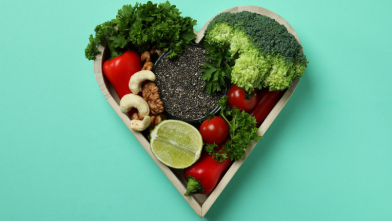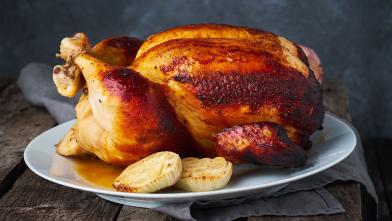It’s no surprise that winter comfort foods tend to be less than healthy. We’re craving warmth and something that gives us feelings of love and nostalgia. They tend to be filled with fat, salt, and carbohydrates—big on calories but not much in nutrition. Indulging in all that nostalgia has its health pitfalls, but there are ways to modify those comfort foods of our past to make them healthier.
Strategies to Make Comfort Food Healthier
There are a few strategies for doing this: substituting ingredients, reducing the quantity of unhealthy ones, and changing the cooking technique.
Let’s talk about soup. There may be no food as comforting as thick creamy soups, with their cream, butter, and cheeses.
Ways to make soup healthier:
- Substitute olive oil for the butter when sautéing the ingredients.
- Use light whipping cream or milk to replace the half-and-half that thickens the soup.
- If the recipe calls for cheese, choose a low-fat variety or simply reduce by a third or a quarter the amount you were going to add. (If the recipe calls for one cup of cheese, reduce the amount to 2/3 or ¾ cup.)
To thicken the soup without dairy, try these tricks:
- Ditch the half-and-half and make a cornstarch slurry (a mixture of cornstarch and a liquid) with water or broth, using a ratio of ½ tablespoon of cornstarch to a cup of liquid.
- Make a slurry with flour, using a tablespoon of flour to a cup of liquid. Be sure to bring the soup to a boil while stirring in since it’s the heat that activates the slurry and helps with the thickening.
- Mix equal parts soy milk and silken tofu. Bonus—this adds more protein to the soup.
- Sauté minced garlic, celery, and carrots until opaque, then add whatever chopped veggies you enjoy—broccoli, cauliflower, greens—with herbs and spices and a couple of diced red potatoes, a sweet potato, or winter squash. Add low-sodium chicken or vegetable broth to cover. Bring to a boil, reduce the heat, and simmer for an hour. Once the vegetables, including the potatoes, have softened, use an immersion blender to puree the mixture into a creamy texture.
- Toss raw veggies with olive oil and roast them until they’re cooked through, then combine with broth in a saucepan and puree with an immersion blender. You can add shredded chicken, beans, or cooked whole grains if you like.
Other Comfort Food Twists
See other comfort food favorites below with a healthy twist:
- Chili: Instead of beef or pork, substitute with skinless chicken or turkey. Beans, from black to pinto to kidney, work perfect here as well. Add lots of chopped vegetables, like sweet peppers, mushrooms, fresh or canned tomatoes, and carrots. Serve over whole grains or a bowl of fresh greens.
- Risotto: Instead of rice, use hulled barley. Instead of butter, use olive oil. For more flavor (and nutrients) add mushrooms, spinach, squash, or fennel, and garlic and onions.
- Pasta: Go for whole wheat pasta, Japanese shirataki noodles (which are very low in carbs), or spiralized zucchini.
- Burgers: Lower the amount of fat by combining half the amount of lean ground beef with cooked beans or lentils—or sub out the beef with ground chicken or turkey. Pile on your favorite veggies and enjoy on a whole grain bun.
- Mashed potatoes: Halve the number of potatoes and mix with turnips, parsnips, celery root, or cauliflower—or forego potatoes and swap in cauliflower steamed with garlic cloves and chopped green onions. Blend with olive oil instead of butter, a little milk instead of cream or cream cheese, and herbs and spices.
- Lasagna: Use whole grain lasagna noodles, part-skim ricotta and mozzarella, and lots of vegetables. Or switch the noodles with long, thin slices of eggplant or zucchini—baked or sautéed first.
- Meatloaf: Use lean ground chicken or turkey instead of beef, oatmeal instead of breadcrumbs, and egg whites instead of the whole egg.








